Discover 11 hidden attractions, cool sights, and unusual things to do in Saint John (Canada). Don't miss out on these must-see attractions: Reversing Falls, Saint John City Market, and Fort Howe. Also, be sure to include Cathedral of the Immaculate Conception in your itinerary.
Below, you can find the list of the most amazing places you should visit in Saint John (New Brunswick).
Table of Contents
Reversing Falls

Tidal rapids on the Saint John River. The Reversing Falls are a series of rapids on the Saint John River located in Saint John, New Brunswick, Canada, where the river runs through a narrow gorge before emptying into the Bay of Fundy.
The semidiurnal tides of the bay force the flow of water to reverse against the prevailing current when the tide is high, although in the spring freshet, this is frequently surpassed by the downstream volume of water. The rapids, or "falls", are created by a series of underwater ledges which roil the water in either direction, causing a significant navigation hazard, despite the depth of water. As a result, vessels wishing to enter or exit from the river must wait for slack tide.
The Reversing Falls have also been an important industrial site for over a century. The Canadian Pacific Railway constructed the Reversing Falls Railway Bridge in 1885 and this structure was replaced in 1922; it is currently used by the New Brunswick Southern Railway. The railway bridge crosses the gorge immediately downstream from the falls, parallel to the Reversing Falls Road Bridge.
The location of the falls was the site of a foundry and other light industrial operations on the east side of the gorge, while a large pulp mill lies on the west side. J.D. Irving, the company which has operated the pulp mill since purchasing it in the late 1940s, has encountered some criticism in recent decades for maintaining the facility at what is viewed as one of Saint John's prime tourism locations. This criticism became most pronounced during the 1980s and 1990s when the city government created Fallsview Park on the former industrial foundry lands on the east side of the gorge. The Falls were even given the dubious distinction by one publication as being among the worst tourist attractions in the world.
During the late 1990s, a tourist business was established, offering jet boat rides on the river in the vicinity of the falls; however, the boats did not operate in the roughest areas which experience a drop in water level over a very short distance. The business closed at the end of the 2013 season after 19 years. The operators tended to stay in the choppy waters immediately downstream and attempted to soak passengers by driving through small whirlpools at the base of the railway bridge. Another more recent development at the Reversing Falls has been its growing use as a whitewater kayaking location, made unique by the changes in formation of the rapids during incoming or outgoing tides.[1]
Address: 200 Bridge Rd, Saint John (West Side)
Saint John City Market
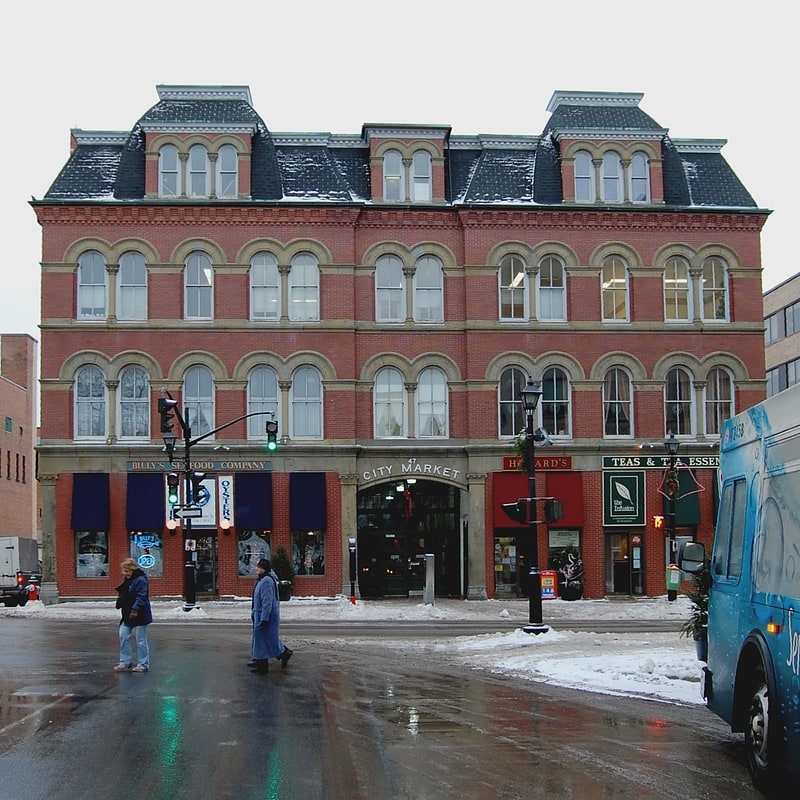
Farmers' market in Saint John, New Brunswick. The Saint John City Market in Saint John, New Brunswick, is the oldest continuously-operated farmer's market in Canada, with a charter dating from 1785. The market is located at 47 Charlotte street.[2]
Address: Saint John City Market 47 Charlotte St, E2L 2H8 Saint John (Central Peninsula)
Fort Howe

Historical landmark in Saint John, New Brunswick. Fort Howe was a British fort built in Saint John, New Brunswick during the American Revolution. It was erected shortly after the American siege in 1777 to protect the city from further American raids. The 18th and 19th century British Army fortification stood at the mouth of the St. John River where it empties into the Bay of Fundy. A replica blockhouse has been constructed approximately 250 metres to the northeast of the original structure.
The fort initially held eight cannons, barracks for 100 men, two blockhouses, and an outer wall composed of fascines, sticks and sod. By 1778, the fort consisted of a more substantial blockhouse and barracks located within a palisade, as well as an abatis. A further third blockhouse was constructed at the east end of the hill, which was the continuation of a ridge formed by the St. Croix Highlands - a coastal extension of the Appalachian Mountains along the north shore of the Bay of Fundy. Upon completion of the fort the British Army named it "Fort Howe", after Sir William Howe, Commander-in-Chief of the British Army in America between 1775-1778. The fortification provided watch over the strategic river mouth and offered protection for surrounding rural communities from American privateers and marauding forces.[3]
Address: Magazine Street, Saint John (North End)
Cathedral of the Immaculate Conception
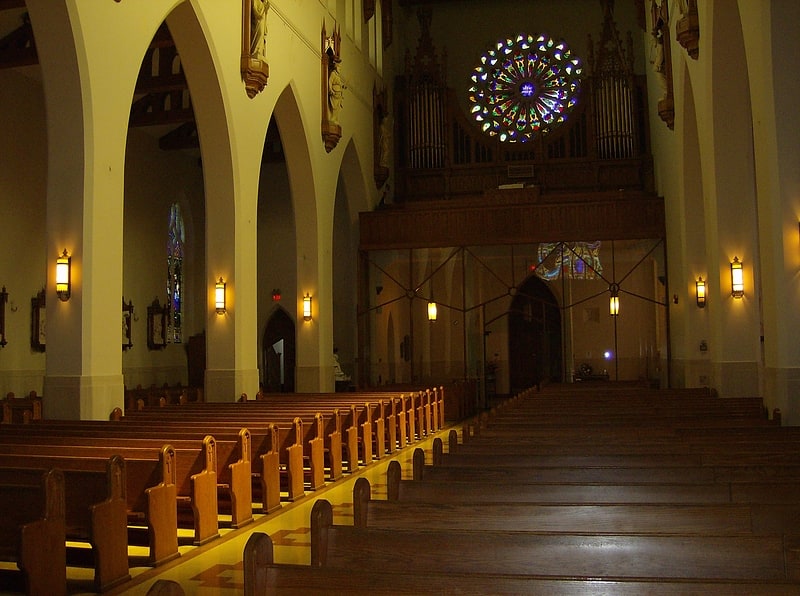
Cathedral in Saint John, New Brunswick. The Cathedral of the Immaculate Conception in Saint John, New Brunswick, Canada is a cathedral of the Roman Catholic Diocese of Saint John located at 91 Waterloo Street in the city's central neighborhood of Waterloo Village.[4]
Address: 91 Waterloo St, E2L 3P9 Saint John (Central Peninsula)
New Brunswick Museum

Museum in Saint John, New Brunswick. The New Brunswick Museum, located in Saint John, New Brunswick, is Canada's oldest continuing museum. The New Brunswick Museum was incorporated as the "Provincial Museum" in 1929 and received its current name in 1930, but its history goes back much further. Its lineage can be traced back another 88 years to 1842 and to the work of Dr. Abraham Gesner.[5]
Address: Market Square, E2L 4Z6 Saint John (Central Peninsula)
Loyalist House

Museum in Saint John, New Brunswick. Loyalist House is a museum and National Historic Site located in uptown Saint John, New Brunswick. It was the home of the prosperous Merritt family, who occupied from its completion in 1817 until 1958. It was taken over by the New Brunswick Historical Society in 1961. Its current address is 120 Union Street.[6]
Address: Sydney Street & King Street East, Saint John (Central Peninsula)
Carleton Martello Tower

Historical place in Saint John, New Brunswick. Carleton Martello Tower in Saint John, New Brunswick, is one of the nine surviving Martello Towers in Canada. The tower dates from the War of 1812 and played a significant role in conflicts until the Second World War. The site now features a restored powder magazine, a restored barracks room, and exhibits in the tower and in the visitor centre. The tower's roof offers a view of the city of Saint John and its harbour. Carleton Martello Tower is one of the oldest buildings in the city and has been designated as a National Historic Site of Canada since 1930. It has been open to the public since 1963.[7]
Address: 454 Whipple St, E2M 2R3 Saint John (West Side)
Imperial Theatre
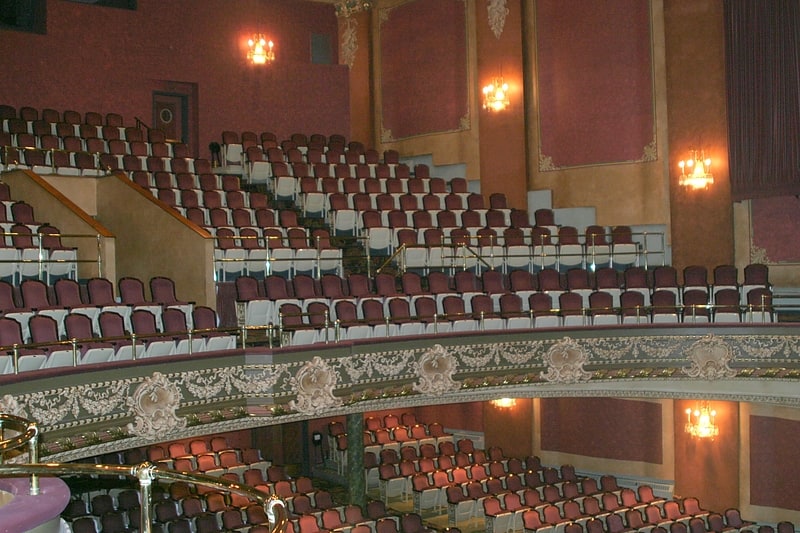
Theatre in Saint John, New Brunswick. The Imperial Theatre, in Saint John, New Brunswick, was designed by Philadelphia architect Albert Westover and built in 1912 by the Imperial Theatre by the Keith-Albee-Orpheum Corporation vaudeville chain of New York City and their Canadian subsidiary, the Saint John Amusements Company Ltd. It opened to the public on September 19, 1913.
One of Canada's first comedy troupes, The Dumbbells staged several of their first shows there. Many early stars of silent film had their films played in the Imperial, such as Charlie Chaplin, Buster Keaton, Fatty Arbuckle, Greta Garbo, and Harold Lloyd.
The theatre was designed as a modern adaptation of the Italian Renaissance, and was used both for live vaudeville acts as well as "talkies". In 1929, it was renamed the Capitol Theatre, and like most vaudeville houses across the continent, became a cinema.
From 1957 to 1982, the Imperial Theatre was used as a meeting space by the Full Gospel Assembly. In 1982 the Imperial was abandoned by the religious group.[8]
Address: 24 King Sq S, E2L 5B8 Saint John (Central Peninsula)
Barbour's General Store

Museum in Saint John, New Brunswick. Barbour's General Store is a museum and tourist hub in Saint John, New Brunswick. It is an authentic 19th-century general store building, preserved and used to recreate a Victorian-era educational experience for visitors. It is located at the intersection of King Street and Prince William Street in the Trinity Royal Historic Preservation Area in the city's uptown. On August 22, 2015 the shop was re-opened to the public as a functioning business and local information centre.[9]
Address: 10 Market Square, E2L 1E8 Saint John (Central Peninsula)
Saint John Harbour Bridge
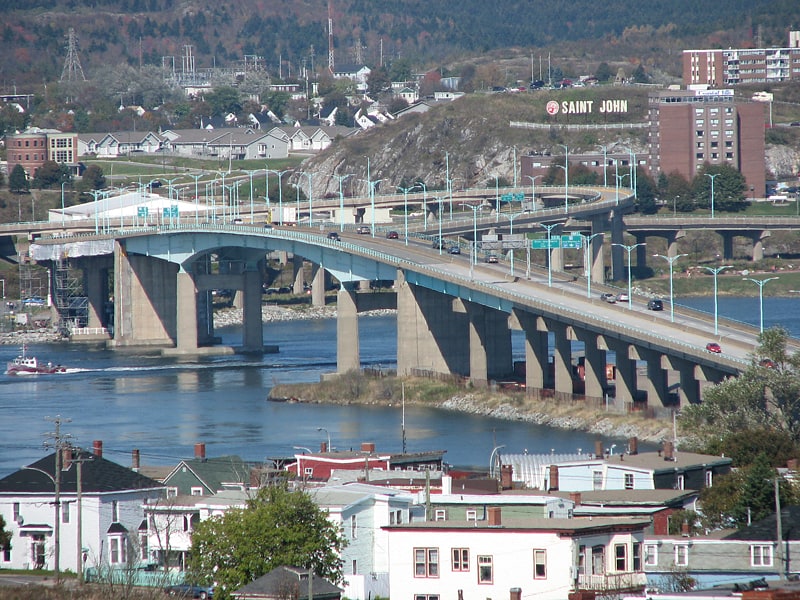
Bridge in Saint John, New Brunswick. The Saint John Harbour Bridge is three-span crossing of Saint John Harbour at the mouth of the Saint John River in Saint John, New Brunswick, Canada. It opened in 1968.[10]
Reversing Falls Railway Bridge
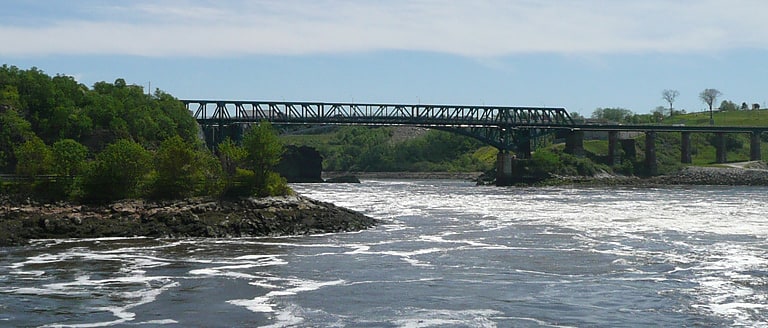
Truss bridge in New Brunswick. The Reversing Falls Railway Bridge is the name given to two different steel truss bridges crossing the Saint John River at the same location in Saint John, New Brunswick, Canada.
The original bridge was constructed in 1885 immediately upstream of a highway crossing known as the Reversing Falls Bridge. Measuring 372 metres (1,220 ft) in length, the railway bridge carried a single-track main line.
It was constructed by the Saint John Bridge and Railroad Extension Company which was a municipal-owned corporation established to connect two separated sections of the former European and North American Railway project. The eastern section of the E&NAR was merged into the Intercolonial Railway following Confederation while the western section was acquired by the New Brunswick Railway (NBR). The Saint John Bridge and Railroad Extension Company was acquired by the NBR following the construction of the bridge. The NBR was purchased by the Canadian Pacific Railway in 1890.
A replacement structure keeping much of the same design was opened in 1922 to accommodate heavier loads; the original being demolished in 1921.
In 1976 NB Power constructed the Lorneville Pipeline from Irving Oil's Canaport supertanker oil terminal at Red Head, 4 km (2.5 mi) southeast of the city to the Coleson Cove Generating Station, 16 km (9.9 mi) southwest of the city; it crosses the Saint John River using this bridge.
The City of Saint John also uses the bridge to carry water supply pipes.
The railway bridge is currently owned and operated by the New Brunswick Southern Railway, following CPR's sale of its Canadian Atlantic Railway subsidiary in 1995.[11]